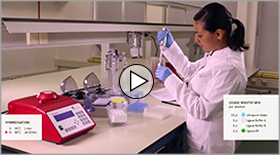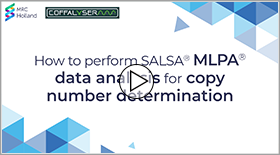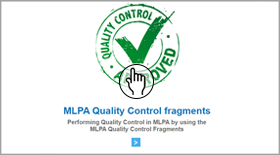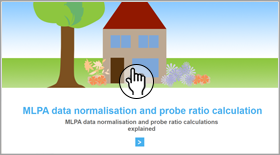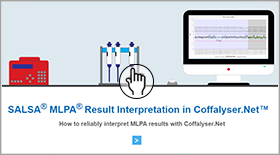This article is intended to help you get started with your first MLPA® experiments. Our website and support portal offer a lot of resources. This article provides an overview of the most important resources, and suggests an order in which these can be reviewed.
Step 1: Understanding MLPA
Watch the video below to get familiar with the principle of MLPA or read this textual explanation instead.
Step 2: Performing MLPA in the lab
Make sure to review the MLPA General Protocol in detail before starting. If you are planning an MS-MLPA experiment, review the MS-MLPA General Protocol instead. The protocol contains important information about things like validation, sample selection, instrument settings and critical experimental steps. It is very important to follow the protocol exactly, as deviations may lead to unreliable results.
The protocol also contains a list of everything that you need to set up an MLPA experiment. This includes things like a thermocycler with a heated lid, a capillary electrophoresis device, TE buffer, ultrapure water and standard laboratory consumables.
Watch the video below for a demonstration of how MLPA is performed in practice, and for some helpful practical tips and tricks.
Step 3: Data analysis software
Correct data analysis is critical to obtain reliable results. Our free MLPA data analysis software, Coffalyser.Net™, has been designed specifically for MLPA, and helps you get the most out of your data. Find a general overview of the software here, read a slightly more technical overview here, or immediately download the software free of charge.
The installation manual can help you install the software. Read the reference manual for detailed instructions on how to set up your first experiments. The videos below walk you through a typical MLPA or MS-MLPA analysis.
Step 4: Quality control
Proper assessment of the quality of your data is critical for reliable results. Coffalyser.Net performs many quality checks automatically, but it can still be useful to have an understanding of the most important quality indicators. Our e-learning module about the quality control fragments in MLPA probemixes is a good way to get started.
When problems do occur, you can view the quality control flow chart included in the (MS-)MLPA General Protocol or our troubleshooting wizard for help identifying and solving the most common issues.
Step 5: Result interpretation
You can proceed with the interpretation of the results of your experiments if the data was of sufficient quality. The biological interpretation depends on the application, but to fully grasp the results it can be useful to understand how MLPA data is normalised and how Coffalyser.Net arrives at the final probe ratios. The first e-learning module below walks you through this process with easy-to-understand examples. The second e-learning module provides more information on result interpretation.
More information
More educational material and instructional videos can be found in this collection. You can also search or browse our help centre for answers to frequently asked questions.
If you prefer to learn in a more classical setting, you can consider attending one of (virtual) workshops or webinars. More information about the contents and schedule of our workshops is available in our events overview.
Stay in touch
You are always welcome to contact us. Although we cannot help you with a clinical interpretation of your results, our technical support team is always happy to help you with troubleshooting, and to answer any other questions that you may have.
We also recommend registering for an MRC Holland account on our website. This account enables you to:
- Obtain your free copy of Coffalyser.Net and our other data analysis software.
- Add products to your favourites, and subscribe to notifications about important changes to your favourite products or their product documentation.
- Manage your subscription to our general newsletter.
- View a history of your conversations with our support department.
You can also subscribe to our newsletter without creating an account.

